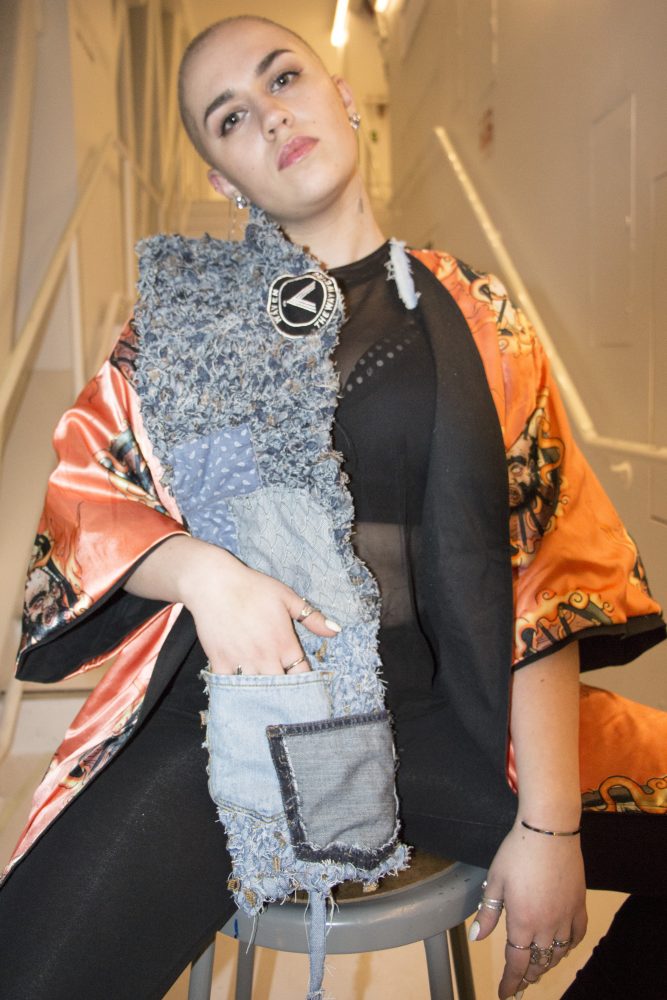Research:
Research on quilting:
- Videos: https://www.youtube.com/watch?v=z9C3g3_ukh4
- Websites: https://weallsew.com/how-to-make-a-quilt/
- Materials needed: batting, sewing machine, needles, thread, etc.
How quilting came into being:
- Early settlers could not afford to discard things when they wore out therefore when blankets worn out, they were patched together and combined with other blankets.
- The art of quilting became more widespread as yarns and fabrics became more affordable
- Popular styles of quilts in 1800: whole cloth quilts, broderie perse and medallion quilts.
Research on Knitting:
- Materials needed: 16’ circular needles, tape measurer, yarn, regular 10mm needles.
- How to knit a basic beanie:
- https://www.youtube.com/watch?v=V-QXH1sgU4w
- 2 basic stitches:
- knit stitch:
under the yarn.
- Perl Stitch:
Over the yarn.
- Cast on
Begin stitch.
Fun facts about knitting:
- Knitting has shown to be able to reduce stress, depression, anxiety, addiction, eating disorders, etc.
- Anecdotal evidence strongly suggests that knitting can induce a form of meditation very similar to mindfulness.
- Rhythmical, repetitive motions of knitting could enhance release of serotonin (hormone that regulates mood, learning and sleep.
Sketches:
Process:
Product picture:
Final photos:
Collab with my friend John: John x Sirinda
Scarf: Sirinda
Reversible Kimono: John
This is a collaboration I did with my friend John who majors in strategic design and management. He designed a kimono and had it made. I thought it looked incredibly well (surprisingly) with the denim shawl. We’ve been talking about collaborating for the longest time and this is proven fact that we do have the same aesthetic and that there is definitely a future in a Sirinda x John collar ration collection.
Artist statement:
For the Materialized project, I chose to deconstruct my denim jeans. These were a pair of cheap designer jeans that I got from a boutique during London Fashion Week, I definitely love these jeans but as I grew older, I grew out of them as well. However, I never got sick of looking at the intricate patterns and the home-made aspect of them, there were so many patches of different styles and patterns, it reminded me of the Japanese Boro technique in which they would patch together excess pieces of denim and quilt them. Denim is such an iconic piece of garment, it’s not only fashionable but has a long history and is very utilitarian. Denim reminds me of a universal language because it is worn globally and almost never goes out of style. It is usually a staple piece in anyone’s closet and does not have a gender label on it. Denim also easily looks good on everyone, usually when people have dilemma’s over what to wear, its usually denim that they turn to. The development and transformation of denim overtime also impresses and fascinates me. Denim has transformed from a purely utilitarian item to one of the most fashionable and inter-changeable garment in fashion history. There are immense variety’s and styles of denim from ripped to lace, from tight-fit to oversized, from light-wash to acid wash, the styles are endless. It is quite phenomenal to see how one garment can impact the fashion industry in such a powerful way.
Knitting was a crafting technique that I committed to over the winter break and it helped me mentally and I found it incredibly therapeutic. Therefore, I decided to attempt to knit my denim jeans without realizing how unforgiving denim can be sometimes. Firstly, I deconstructed my denim jeans without breaking any threads; I took out the pockets, the patches and zippers, attempting to save them as embellishments later on. I then cut up my jeans into strings that resembles strips of yarn. What I did not anticipate was how easy the denim would break, especially the areas where the jeans are attached together. What was extremely excruciating to deal with was the fraying of the denim as well as the rigidity of the fabric. What I experienced from knitting denim was that it sort of took the therapeutic aspect out of the knitting process. My hands also went through extreme pain from trying to pull out the denim as well as patch together broken strips. However, the final product was extremely worth it. I loved the new texture that I created and I don’t think I’ve seen knitted denim before. Even though the denim frayed intensely, I ended up actually quite enjoying the texture because it gave the whole scarf dimension. I decided not to knit a full on scarf but to leave it as a shawl and tie it at the ends because I wanted the scarf to almost engulf the customer. I wanted it to retain the aspect that denim is known for: utility and fashion. Therefore, I made it so that it would keep the customer warm but at the same time, I added on patches and pockets to keep it contemporary and fashionable. The patches were my favorite part of the scarf because I could still see my old denim jeans in them and they also made the scarf look like it was obviously made out of denim. This was an extremely painful project to undertake but I loved the experience of knitting with another fabric. Being a beginner knitter, I was barely comfortable knitting with yarn. The sudden transition to denim really gave me a challenge but at the same time I felt like I excelled and tackled the challenge head on. I am extremely happy with the end product and dare I say it, it even looks quite high fashion to me (specifically reminded me of the recent Raf Simmons show). I feel like this scarf/shawl has a lot of character to it and responds to the current millennial fashion market.
